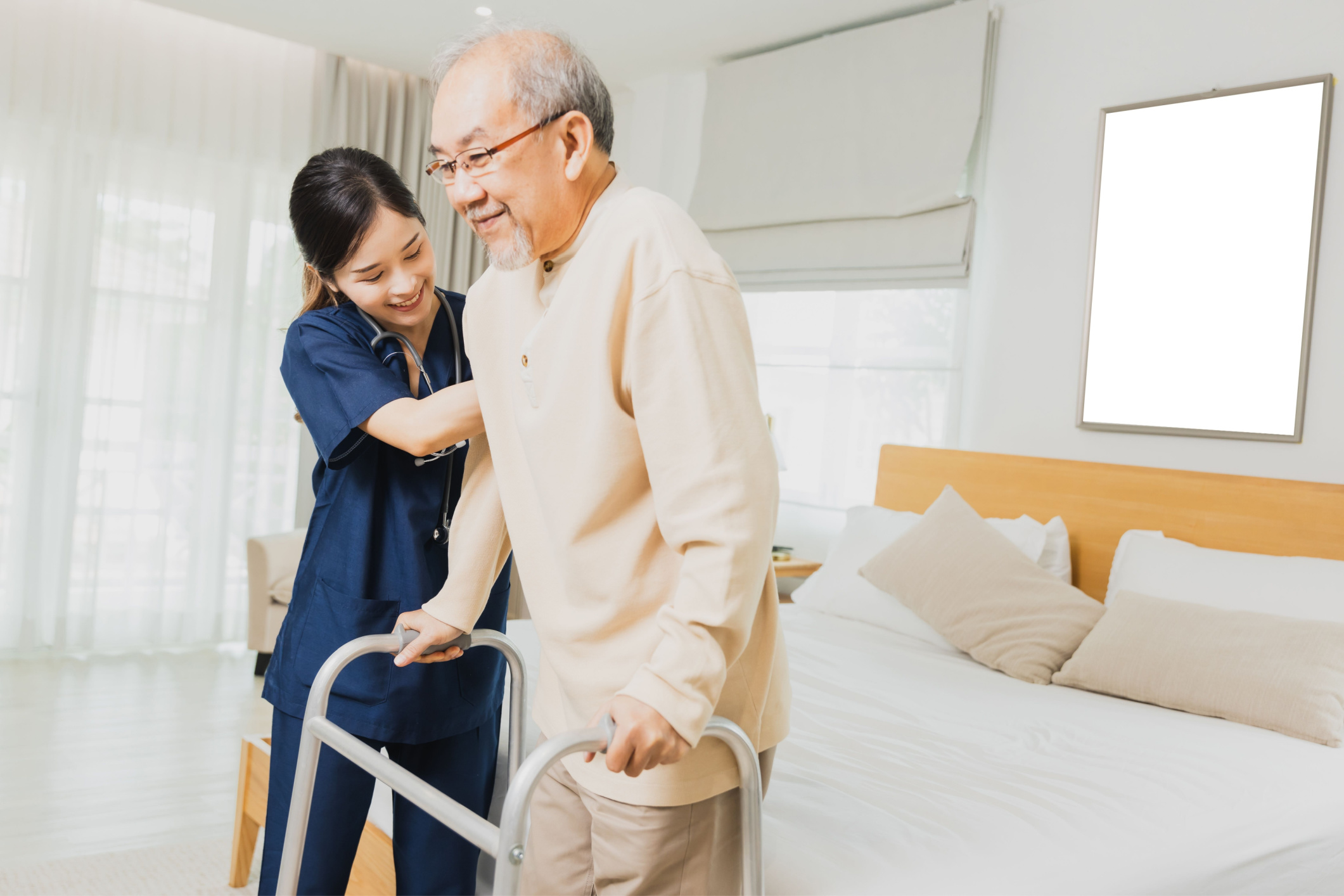
There’s a wise saying – “if you don’t use it, you lose it” – which is tried and true reality of mobility, particularly for older people. This is why it is so important for residents in aged care to stay active in whatever capacity they can manage. But, as an aged care worker, it might seem difficult to know how to encourage residents to stay mobile on top of your existing workload.
Exercise Physiologist at HammondCare, Lauren Groom, said the role of care staff as ‘encouragers’ cannot be underestimated.
“Care staff really are the ‘gateway’ for residents to move more. Every little bit of movement is beneficial, and we want to create environments where residents can be as active, independent and as happy as possible,” she explained.
“From encouraging residents to get up out of bed, or participate in activities, or to eat meals in the dining area, creates opportunities for mobility and social interaction, all positive for mood.”
For older people, excessive exercise and strenuous workouts aren’t necessary to maintain mobility. For a resident with mobility issues, simply helping them to do a few ‘sit-to-stands’ from bed or their chair throughout the day will help them maintain their core strength – making it easier for them to move and for you to help transfer them around the facility.
Director of HammondCare’s Centre for Positive Ageing, Professor Chris Poulos, worked with HelloCare to help put these practical tips together for aged care workers to arm them with the knowledge they need to promote activity and movement among their residents.
Everyone is different. People living in care homes are challenged by having health conditions that impact their ability to exercise and stay active and mobile. Particularly for those residents at risk of falls, there is a tendency to stop them from doing anything. But it is not healthy for residents to sit in a chair all day and avoiding movement can further diminish their mobility and cause other ailments like pressure sores.
This is why it is important to know your resident, what they can and cannot do, and the limitations that they have – be it strength, balance, cognition, endurance, or dexterity.
Similarly, get to know what your resident wants to do and likes to do. Just think – if you would find the activity meaningless and boring, the chances are your resident will as well! By incorporating your residents’ interests and hobbies into activities, they are more likely to engage with and enjoy them.
Lauren Hansell, Exercise Physiologist with HammondCare’s Restorative Care Team pointed out that: “Even if the resident does not want to participate in a group activity, try to encourage them to come out of their room and sit nearby so that they get some extra movement into their day and a change of scenery. You never know, they might want to join in next time”.
For residents at risk of falling, the answer is to make sure every resident has had a falls risk assessment and that activities are matched to their abilities. If you’re not sure what a resident can and cannot safely do, ask allied health members in your team such as a physiotherapist.
Adding incidental exercise into everyday tasks is a great way of encouraging residents to exercise without it feeling like a workout.
A key principle of ‘reablement’ is to “do something with someone, not do everything for them”.
For example, before leaving the dining table after lunch, staff can assist/encourage a person to do a few extra sit-to-stands at their dining chair before walking.
If they are able to safely, care staff should let residents put their own shoes on, brush their own hair or teeth and reach forward from their chair to get their glass of water instead of you moving it closer to them.
“How about asking a resident to march on the spot in their chair while you get their clothes ready for the day or make the bed? This can allow them an opportunity to move their legs,” she suggests.
For residents whose mobility is very challenged, and maybe unsafe, groups exercise while seated can still offer positive benefits – especially when matched to music, singing or even Bingo!
Exercise, while seated, can offer upper limb strengthening and function, coordination and cardiac benefits too.
Something simple like “asking a resident to sit upright and away from the backrest of their chair for a few minutes while you are close to them, means they are using their trunk muscles”, is another of Ms Groom’s tips.
Lifestyle Coordinators often host activities for residents of varying mobility. These can include knitting which increases coordination and dexterity and drumming to the beat of a song which can increase arm strength and also coordination.
How do you keep your residents moving? Let us know in the comments!